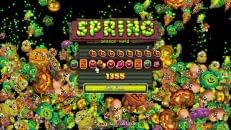
FTL Faster Than Light Review
FTL: Faster Than Light is a space simulation, rogue-like, real-time strategy game that was released in 2012 by indie developer Subset Games. The game was released for users on Linux, Microsoft Windows, and macOS.
This indie game may not look like much at first glance, but once you get into it, it actually offers a lot of depth, not to mention that it is a lot of fun to play. If you want an entry game into space simulation games, then FTL: Faster Than Light is an overall great game that will not disappoint you.
Plot and setting
In the game, you control a spaceship that has the ability to fly faster than light, as the title of the game suggests. The ship belongs to the Galactic Federation, which is at war with the xenophobic rebel faction, made up entirely of humans. Unfortunately, the Federation is at the verge on losing when the FTL ship’s crew intercepts data from the rebel fleet. This data could be used to defeat the rebels and ensure victory for the Galactic Federation.
During the game, your main objective is to make sure the ship safely reaches the Federation headquarters, which is located several space sectors away. On reaching the final sector, a battle with the Rebel Flagship awaits. This is a multi-stage fight that will determine the victory or defeat of the Federation.
Gameplay
At the start of the game, you have to choose a spacecraft with a crew and several systems rooms such as piloting, weapons, engines, life support, etc. Then, the game randomly generates eight space sectors, with a number of waypoints per sector. You have to jump the ship between these waypoints without knowing what waits for you on the other side. Once you reach a sector, you have to make your way to an exit point that leads to the next sector, all the while fighting the rebels who try to stop you. This repeats, and gets harder with each sector until you reach the Federation headquarters.
You can gather or buy ship gear, weapon upgrades, crewmen, as well as the scrap needed for ship upgrade. Ship development is extremely important since you have to face constant threats. Players who are familiar with RPG games will have no trouble getting the hang of it since developing the ship is very much like handling your RPG character. You put scrap points in order to enhance and upgrade the main reactor, sensors, shields, life support, etc.

Players need to be aware so that they can find a balance between upgrading the systems and upgrading the reactor. If you don’t have enough power to drive them, you can’t put your systems to use, regardless of how advanced they may be. You really have to weigh your options so as to get the most efficient ship, and carefully consider what each system offers since they all have offensive and defensive ratings and abilities with specific advantages in battle.
Battles in FTL run in pausable real-time, and the player has full control of all ship functions and crewmen. Since all ships are shown with their housing system, you can target your weapons at the exact facilities you want on enemy vessels. Your enemies can do the same as well. Combat can be evaded by jumping into waypoints once the ship is fully charged. As such, you can occasionally avoid hostile space vessels during the game.
The game has eight different crew species, which are Humans, Engi, Mantis, Lanius, Zoltan, Rock, Slug, and Crystal. The player can acquire members of all these species, or you may find them manning enemy ships. Each species has its own set of strengths and weaknesses, based on the physiology. For example, members of the Rock species have very strong health and are immune to fire, but they are relatively lower compared to other species like Humans.
A ship is considered to be defeated if the whole crew is eliminated. If its hull points are reduced to zero, then it is considered to be destroyed. If the enemy emerges victorious, it is considered as game failure, and the player will have to start over.
In FTL: Faster Than Light, each of the ship designs and layouts focus on the different aspects of gameplay. For instance, the design of the ship roster emphasizes upon boarding, stealth cloaking, drone systems, and so on. You can also engage in separate achievements that have no gameplay impact. The player can modify the game in order to change the various ship configurations.
Watch the Trailer:







